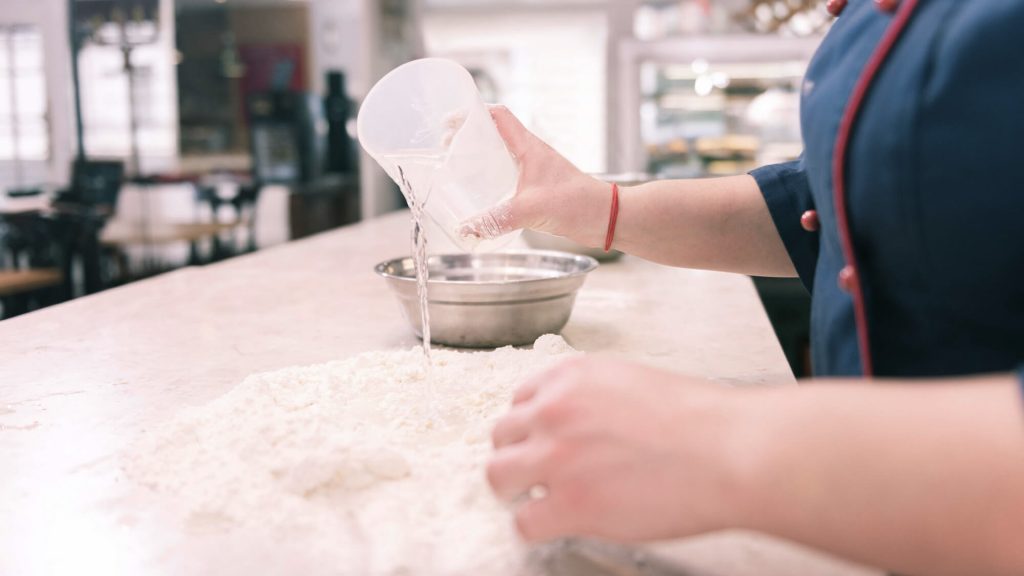Food manufacturers build success by producing dependable, high-quality products for consumers, and baked goods are no exception. Different types of baked goods require flours with differing properties and quality standards. Water absorption is a critical element in the baking process. The optimal amount of water is essential to achieve the final product’s proper consistency. If too little water is added to the flour, the dough is brittle, dry, and hard, too much, it becomes sticky, wet, and soft.
Devices such as the Mixolab by CHOPIN Technologies measures these characteristics during the mixing process. There are three different flour components involved in water absorption (glutenins, damaged starch, and pentosans), and each of these has a significant, distinctive physical effect on the flour. Thus, flours with the same water absorption can react very differently during mixing and baking.
SOLVENT RETENTION CAPACITY (SRC) METHOD
In the 1990s, doctors Harry Levine and Louise Slade created and developed a test for the quality assessment of cookie and cracker flours. The evaluation would become known as the Solvent Retention Capacity (SRC) method. The unique aspect of the SRC is that it identifies the absorption contribution of each of the three major flour polymers to the final dough paste, providing insight into how the glutenins, damaged starch and pentosans will affect the final product quality. Although initially intended to evaluate soft wheat flour functionality, for items such as crackers, biscuits, and cookies; it is now being effectively used for hard kernel textures, in items such as bread and rolls as well.
SRC data can explain why a specific flour behaves the way it does during production, allowing both millers and bakers the opportunity to troubleshoot and adjust their processes if necessary. Most importantly, it can ensure that the flour used is ideally suited for the final quality they desire. Most bakers use SRC data to specify SRC profiles based on experience with each product, thus guaranteeing consistent end-product quality from each batch of flour. For example, flour with a low water holding capacity is preferred for low moisture crackers and cookies. High flour absorption can be detrimental, lead to cookie spread, longer baking time and increased production costs.
MANUAL METHOD POSES ACCURACY ISSUES
Levine and Slade’s SRC method was approved by the AACC (American Association of Cereal Chemists) in 2009. AACC 56-11.02. But its many successive steps (weighing, shaking, centrifugation, draining), performed for the most part manually and on various and non-standardized equipment, resulted in poor reproducibility, making it difficult to regulate across locations or integrate into product specifications.
CHOPIN TECHNOLOGIES DEVELOPS PRECISE AUTOMATED METHOD
Following the adoption of the AACC 56-11.02, CHOPIN Technologies developed an automated method based on a new device, the SRC-CHOPIN. This method eliminated human errors and greatly improving the test’s performance. Studies have shown that the SRC-CHOPIN lowers reproducibility and repeatability errors by as much as 50%, making it possible to harmonize and standardize the entire analysis process. CHOPIN’s new automated method was approved and standardized by AACC [56-15.01] and ICC 186 in 2019.
SUMMARY
Quality control is an extremely important part of the flour and milling industry. The SRC test provides millers and bakers with the data necessary to predict and guarantee the dough and final product is of the highest standard by characterizing the primary flour’s components’ and properties.
kpmanalytics.com

 Tiếng Việt
Tiếng Việt

